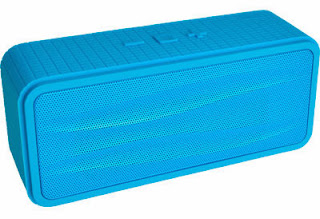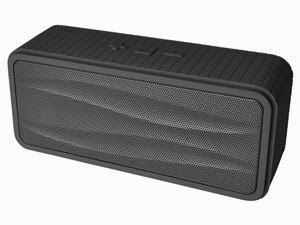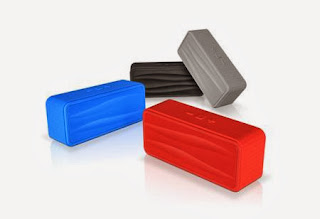Do you own a Bluetooth speaker? If not, I confidently predict that you’ll have one by Christmas. They’re this year’s seasonal gadget of choice, and they vary from pocket-sized gizmos to full hi-fi replacements. The Divoom Onbeat-200 falls somewhere in the middle: it’s mid-price, mid-spec and mid-performance. But there’s one area in which it has few equals: for its size, this thing is LOUD.
The incredible volume levels are supplied courtesy of a rubberised, brick-like housing which contains no less than three speakers. Two of these are tuned at the upper-vocal range, while lower tones are provided by an unpowered, passive bass radiator. Together they provide enough juice to annoy the most mild-mannered of neighbours. There’s a small amount of distortion when things are rocking at full blast, but it’s safe to say that you’ll be too busy shielding your ears to notice.

The sound quality is – well, the sound quality is complicated. In a nutshell, it’s comparable to a decent portable radio, but with a few nuances. The speakers are housed behind a rigid metal mesh, with the main units on the front and the passive radiator at the rear. This gives a choice of soundscape: if you need more bass, simply turn the unit round. At moderate volumes, the result is a pleasing sense of depth and a reasonable (if slightly bright) sound mix. However, crank up the noise and the bass is quickly overwhelmed, leading to overemphasised mid-tones and a tinny, nasal sound in rock songs. Other genres fare better, and internet radio sounds great, but this is still a device that performs best when used unadventurously.

In the end, the Divoom Onbeat-200 works exactly how you’d expect a US$80 device to work. It’s robustly made, sounds reasonably good, and has great connectivity and battery life. Audiophiles should look elsewhere – especially at the ear-perforating volumes that the speakers are capable of – but it’s a decent mid-range choice.
– Rob P.
Contributor








